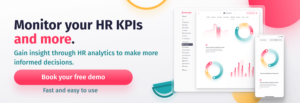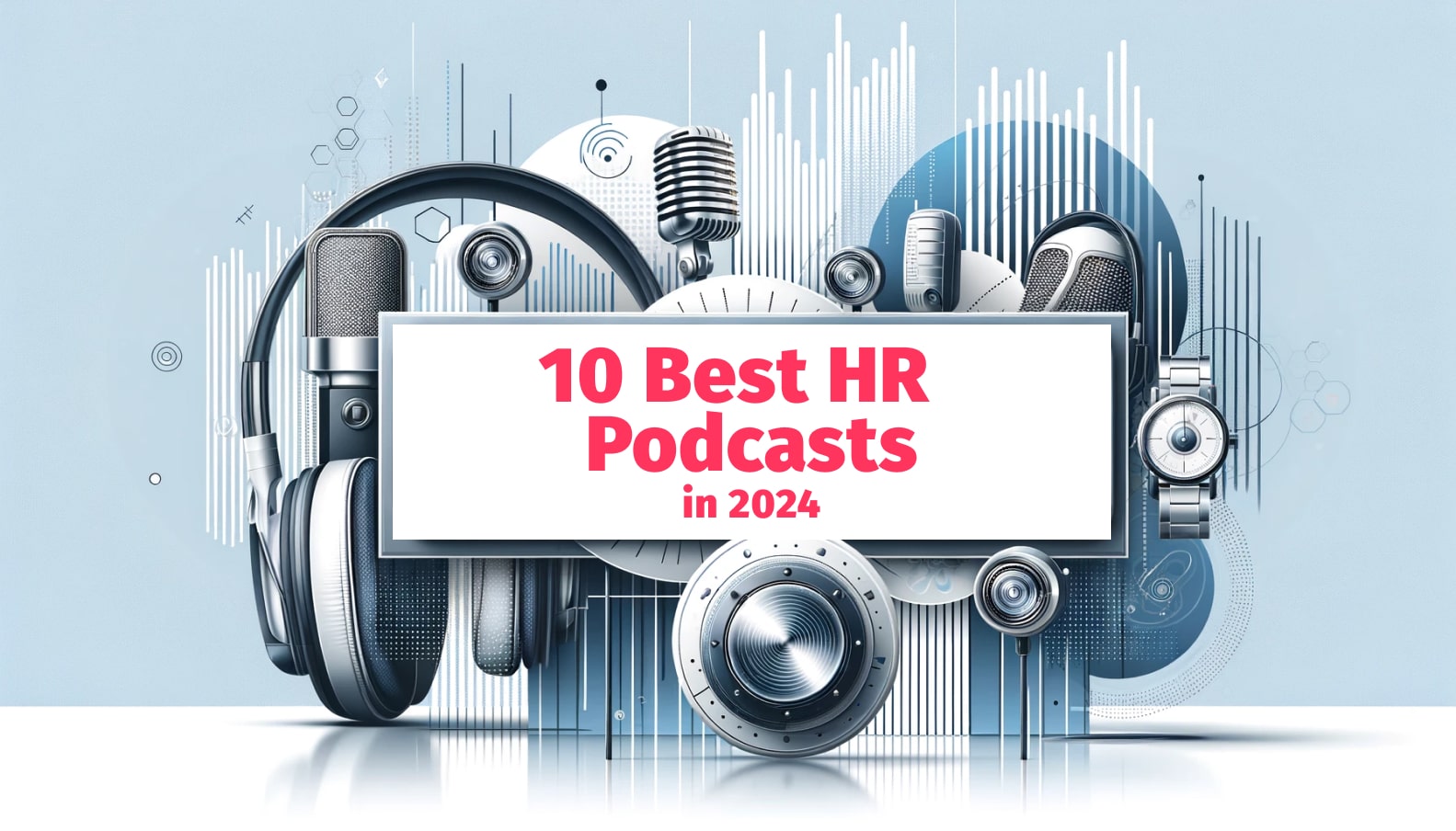HR KPIs analyze how efficient an HR team is in achieving its HR strategy. Let’s explore HR KPIs to set goals and track progress.
As human resource departments automate more tedious administrative tasks, they are increasingly able to take on a more strategic role in the company.
KPIs have long been used in marketing and sales to set goals and measure progress.
However, at the moment HR departments are using these indicators in their day-to-day work. HR KPIs can help businesses leverage existing data, extract valuable insights, and create a plan for the future. Because of this, knowing how to choose which KPIs to track is key. Let’s take a look at some HR KPI examples after a short introduction to the concept.
In this article, we are going to be talking about the ten key indicators that HR managers should take advantage of.
TABLE OF CONTENTS
- What is a KPI?
- HR KPI metrics
- Leverage HR reports
- Important KPIs for HR managers
- 10 principal HR KPI’s
- Human Resources Reports and Analytics Software ✅
What is a KPI?
KPI stands for Key Performance Indicator. These are measurements of progress have become more important to HR leaders as Human Resources Departments have taken a more strategic role.
A Key Performance Indicator (KPI) is a metric that measures the performance of a particular activity or process.
Generally, the objective of a KPI for HR is to analyze the success rate of a project on the basis of the objective you want to achieve.
Therefore, the KPI helps determine whether the HR department has accomplished its goal. This insight facilitates better decision-making and problem-solving.
In marketing departments, marketers will use the open rate of the newsletter in order to measure engagement.
The % of individuals who open the newsletter will determine the relevance and quality of the content that you sent. HR departments should tailor KPIs to match their goals.
For example, HR departments might use absenteeism rates to measure employee satisfaction. They could also measure overtime as an HR KPI, as this data may provide insight into employee workload.
What are KPI reports?
Organizations constantly produce huge amounts of data.
Leveraging this data is crucial for business success. Businesses may utilize this data to measure productivity, track trends, or identify areas for growth.
Too many businesses don’t take advantage of this data. This leads to making blind decisions. It’s also important to remember that not all data will be useful and relevant for business goals. HR KPIs help managers take advantage of the right data.
A KPI report is a visual representation of data associated with key performance indicators. This format is easy to analyze and helps provide immediate insights.
Factorial’s free HR software includes reports and analytics features.
So all your reports are located in one place. This means all your data is summarized and you can manage information at your fingertips, speeding up the process and refining data collection.
| 🚀 Related: 7 Best HR Analytics & Reports Software to Keep Track of HR KPIs |
What are HR KPIs?
Human Resources key performance indicators (HR KPIs) are metrics used to measure how HR is aiding and contributing to the success of an organization.
All in all, HR KPIs analyze how efficient a company’s HR team is in accomplishing its HR strategy. An organization’s HR strategy is defined based on the HR outcomes needed to accomplish the company’s business goals.
Establishing HR KPIs is essential in order to achieve the best return from a company’s human capital.
Also, HR KPI’s prove indispensable to meeting the key objectives of the HR department.
KPIs for HR: Metrics to Measure Success
In order to be successful, HR managers need to use HR KPIs that reflect the larger goals of the department and company. Further, they must be:
- Concrete: The KPI should be tangible and it should have a specific goal.
- Measurable: If you cannot measure the KPI, it isn’t a KPI.
- Reachable: Stay realistic when defining a KPI that will determine your success.
- Relevant: Monitor only the things that really matter, don’t waste time with indicators that do not contribute anything to your company.
HR KPI Examples
Turnover Rate
In the wake of the Great Reshuffling, many organizations are dealing with an especially high turnover and attrition rates. Some reports show that turnover rates have jumped 20% higher than their pre-pandemic average. That’s why measuring turnover is more important than ever.
Turnover refers to the percentage of employees that have left over a certain period of time. Having a high turnover rate is tough on company culture and usually leads to a less motivated and productive workforce. While it can vary by industry, turnover rate should stay below 10%.
How can you measure (and reduce) your turnover rate? Check out the formula below:
Turnover rate (%) = (Number of Leavers/Avg. Number of Employees) x 100
If your turnover rate is high, you may want to make sure that you’re providing fair compensation, a good work environment, and a healthy company culture.
Retention of talent
Retention of talent is closely related to the turnover rate. However, rather than measuring the number of employees who left, this KPI measures the number of employees who stayed, or were retained by the organization. If you’re already calculating turnover rate, calculating retention rate may feel redundant. However, This HR KPI can be leveraged differently.
Understanding the average employee retention rate in an organization is important for workforce planning, recruitment, and overall business strategy. Like turnover rate, retention rates may provide insight into other factors such as the remuneration rate or the labor climate. When talent leaves, HR spends valuable time and resources recruiting to fill the position.
Further, the lost productivity from a position that is left open can have serious effects on the business’s bottom line. High staff turnover implies high costs for the employer.
The rate of talent retention is calculated by comparing the number of workers who joined the company in a specific period vs. those who stayed during the same period. All in all, HR should investigate how salary, time off policies, or office climate impact retention.
(Remaining headcount during a set period ÷ Headcount at the start of the period) x 100
See: Key HR Metrics: 12 Strategies to Boost Employee Retention
Duration in the position
Many employee departures are closely related to the time that they keep in the same position.
If they feel they won’t be promoted, many employees tend to look for new opportunities outside of the company.
You can calculate the average time it takes for an employee.
Why?
Simply to ascend by counting the number of months it takes each employee with the same charge. Plus, to divide the result by the total number of employees in the company.
If you find that opportunities for growth within the company are limited, it might be a good idea to discuss this with management.
Dismissal rate
The dismissal rate measures employee terminations by the employer. This metric can be affected by factors including the type of employment contract, resignations due to an incapacity to work, or retirements.
If involuntary terminations occur for other reasons than layoffs, such as poor performance or misconduct, then it will cost the company a lot of time and money to replace that employee.
HR managers will want to investigate their hiring practices to see where they aren’t hiring or onboarding in accordance with the company values.
Reviewing this KPI is particularly important!
See: Key HR Metrics: How to Learn from Your Involuntary Termination Rate
Absenteeism
Measure the absence rate of employees due to delays, sick leave, or excused or unexcused absences. This indicator can help plan for future absences or adjust your business strategy to prevent them.
HR managers can calculate the key HR KPI by calculating the average value of the hours worked. This will show the impact of absenteeism on the company’s costs.
Once the cost of absenteeism is apparent, it will be easier to create a budget for a preventative strategy.
Average time for recruitment
The average time for recruitment measures the time between the announcement of an employee who is leaving the company and when another candidate is chosen and selected to replace him. It is quite possible to optimize the average time of each new hiring.
But be careful, many factors may be included here.
See: Key HR Metrics: Reduce Your Time to Hire
Education and training
Courses and L&D programs for employees have a direct impact on the company’s activity.
This HR KPI is meant to help boost the productivity levels of each employee. It does this by creating specific strategies to increase the loyalty and satisfaction levels that employees feel when working with the company.
See: How a Training Dashboard Can Help Employee L&D
Cost per hire
This HR KPI measures the number of resources invested into each employee. Measuring labor costs includes the costs associated with recruitment, such as advertising positions, the time cost of reviewing and choosing C’s, and conducting interviews.
All the way through to the cost of training; the cost of manager training, an external trainer hired, and the materials used.
This can take up a significant part of the company budget.
However, it is an incredibly important part of any companies success, as without talented dedicated employees businesses cannot function properly let alone succeed.
Therefore, investment in talent acquisition is key.
See: Key HR Metrics: Analyzing Your Cost-Per-Hire
Employee productivity
This KPI is going to measure the efficiency of your workforce. It analyses how long it takes for employees to accomplish certain tasks and goals that have been set for their position in the company.
Essentially, it analyzes how much work employees are taking on and how well they perform these tasks.
To understand employee productivity, HR should consider all the factors impacting employees’ productive output. This includes the time employees spend working, their performance or the quantity of product produced, and the quality of the product delivered.
So employee productivity data should inform future office policies.
See: Key HR Metrics: Boost Employee Productivity
Accidents in the workplace
It is very important to measure the number of accidents in the workplace in order to avoid future issues.
Employee satisfaction
This is a very important HR KPI one should not neglect, especially due to the ‘war for talent.’
Employee satisfaction is dependent on a range of factors beyond just financial benefits. These include a positive work-life balance, remote working and flexible working options, non-monetary benefits. Among them are gym membership discounts as well as a sustainable and social company culture.
Companies can measure talent satisfaction through employee satisfaction surveys, which should be conducted on a regular basis to make sure all employees’ needs are being met and any issues or concerns they have are being addressed.
Download Factorial’s free employee satisfaction survey to measure how happy employees are feeling within their job. This is important as the happier the employee, the better the quality of the work they produce.
See: Key HR Metrics: How to Measure and Leverage Employee Satisfaction
HR KPI Software to Reach Your Goals
Workforce analytics is increasingly important for HR.
Factorial’s human resources reports and analytics feature generates personalized HR reports from data stored on your Factorial account. Our HR and analytics panel creates a customized space to manage all the reports. This includes our automatically generated organizational chart and our time-off reports.
Employees can clock in and out and update their information directly through the employee portal. This not only means that HR always has access to the most up-to-date information.
Also, it means they have plenty of accurate time tracking data and time off numbers to run reports and gain insight.
This post is also available in: UK, Español Svenska Nederlands Italiano Deutsch Português PT Mexican











THANKS for your content. Its enriching